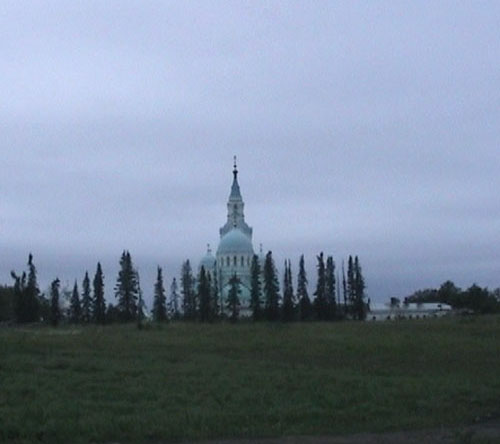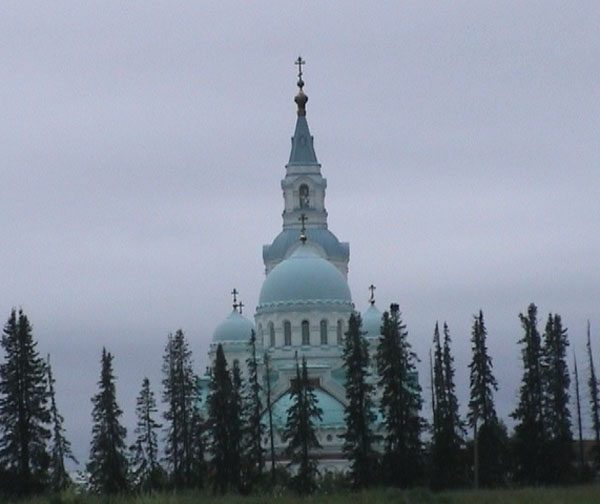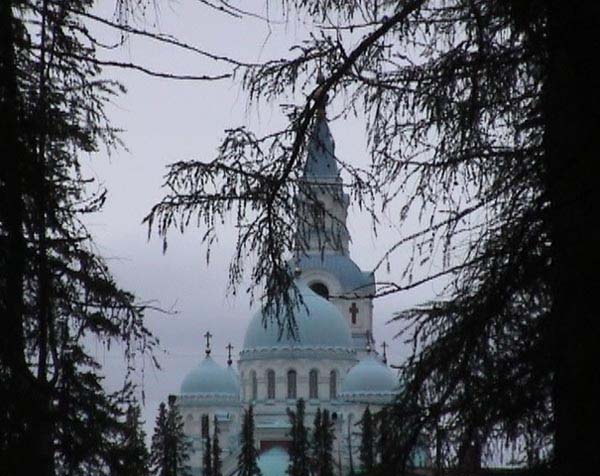 |
 |
 |
Valaam archipelago is located in the northern part of Lake Lagoda. The territory of archipelago received the national park status in 1999. The area of the park is 24.7 thousand hectares, only 3600 hectares of which account for islands. Valaam Island (2800 hectares) is especially notable among them. The island gave its name to both the archipelago and the monastery. For its centuries-old history, dating back to the 10th - 11th centuries, the monastery has created an outstanding architectural complex, which received world fame. In 1992, by the decree of the President of the Russian Federation, Valaam was announced to become the common property of the people of Russia.
The history of the monastery is full of events, but the main thing, that attracts the attention of tourists, is the nature of Valaam. It is so unique, that in the 19th century Valaam became a peculiar school of landscape painting, in which the graduates of the St.-Petersburg Academy of Fine Arts I. Shishkin, A. Gine, F. Vasiljeva e.t.c. prepared their degree activities. They visited Valaam more than once and have immortalized its landscapes on many pictures, which are nowadays stored in the most known museums of the world.
The nature of Valaam is unusual and beautiful even now. Here mighty pines and fir-trees grow directly on rocks, which are tens of meters elevated above water, so that the shores sometimes look as if they are an unassailable fortress. In other places, on the contrary, the rocks go under water very slightly and are ironed by ice to the condition of "forheads of mutton ". Quite often one can meet stone areas or fine sand beaches here. On many islands usual pines, fir-trees and birches are supplemented by groves and avenues of oak, fir, larch, cedar and many other species brought here by the monks from different regions of country a long time ago . All these plantations have rather a decent age - up to 100-150 years, and even more. All of these creates an impression of a certain botanical oasis on severe northern rocks. The picture is completed with gardens, created by the monks. The gardens are especially beautiful during flowering time.
The main purpose of the park is to keep safe beautiful views of archipelago and with the help of the specially made routes to show tourists both cultural, historical and natural sights of this place.
The architectural decoration of the park and its orthodox relics, which have been created for centuries, are inseparable from the natural beauty of the archipelago. The islands were first inhabited in the 10th century, and then orthodox monks settled there. The monastery they built here was ravaged by Swedes in 1611 and was reestablished only in 1715. In 1751 and 1754 all the wooden constructions burned down again. From the time of it's first revival and prosperity in the 18th-19th centuries churches, bell towers, cells, household and industrial constructions were built; roads laid and dams made. With Christian persistence and patience Valaam monks, sensu stricto by hands, created a fertile layer of soils on rocks and grew garden trees, which are remarkable for these places. It is enough to say, that 1.5 centuries ago on Valaam in the conditions of an unique microclimate water-melons were cultivated in an opened ground.
Central monastery complex made of stones became the semantic dominant of the archipelago. Its construction started in the first decade of the 19th century and was finally completed by architect А.М. Gornostaev in 1845-1862. The central manor consists of the Monastery of the Transfiguration of the Saviour, cells, guest house for pilgrims, sacred gates with the Church of Sts. Peter and Paul, the temples of Assumption and Vivifying Trinity.
The Chapel of the Protection, the Church of Reverend Fathers, the Skete of St. Nicholas, the Skete of Alexander of the Svir, the Genthsemane Skete, the Resurrection Skete, the Skete of St. John the Precursos, the Skete of Smolensk Icon and other temple buildings are erected around the central manor.
Industrial zone of the monastery demands special attention. It includes water-supply house, dairy-farm, fish-farm, summer and winter hotels, a system of canals and wells.
How to get
Pilgrimage service of the Valaam monastery and many tourist companies of Moscow, Saint-Petersburg and Priladozhje organize visits to the archipelago.
From southern Karelia, the gateway to Valaam is the town of Sortavala, about 300 km west of Petrozavodsk. A local bus goes from Petrozavodsk to Sortavala daily. By train from Petrozavodsk, take №680, whose final destination is Kostomuksha. Once you get to Sortavala it's an easy 15 minute walk from the train station to the boat pier. Head north along the tracks - the direction from which the train comes into the station - until you get to the bridge, then turn right, then right again.
Boats and hydrofoil perfom regular voyages between Sortavala and Valaam. It takes 3 hours by boat and 45 minutes by hydrofoil . The exact time for each hydrofoil voyage is specified in advance.
Outside the summer season the island can be reached by helicopter, but there are no regular helicopter flights. In winter excursions on snowmobiles are organized.
